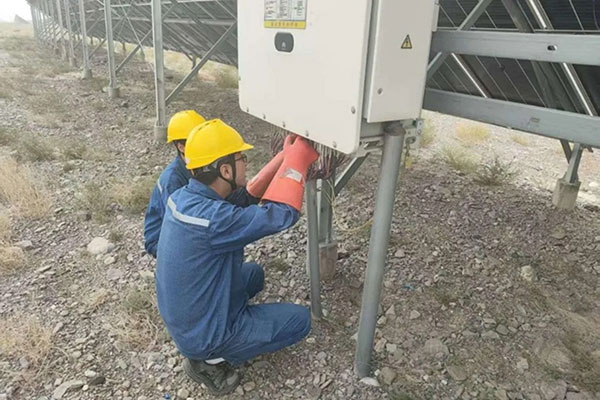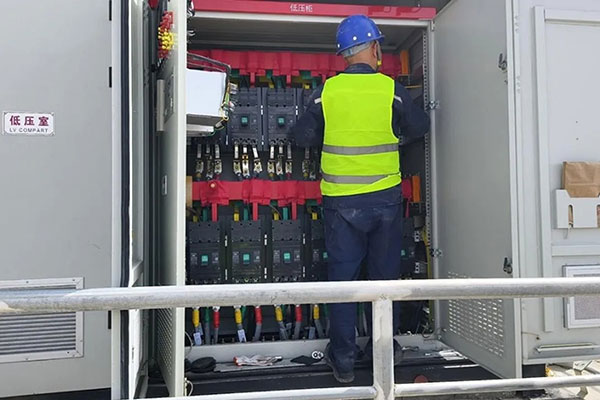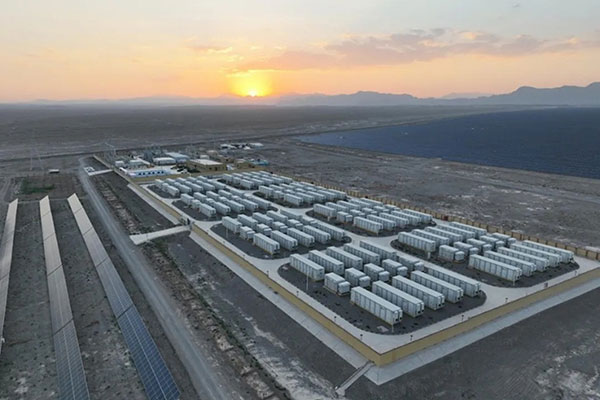Atush: Chasing the Sun Across the Gobi Desert
At the southern foot of the Tianshan Mountains and the western edge of the Tarim Basin, deep in the Gobi Desert, over 800,000 solar panels stretch to the horizon like a glittering blue expanse. The stark contrast between the yellow desert and the vast array of blue panels creates a striking scene under the relentless sun and wind-blown sands. This is Atush Solar-Plus-Storage Power Station built by SPIC Hubei in Xinjiang.
With a total capacity of 400 MW, the station is a flagship project for SPIC Hubei's expansion. It achieved full-capacity grid connection in August 2023. Annually, the project cuts standard coal consumption by approximately 220,000 tons, and reduces carbon dioxide emissions by 600,000 tons, sulfur dioxide emissions by 73 tons, and NOx emissions by 109 tons. This environmental benefit is equivalent to planting 50 million trees, delivering green value through the "solar + desert control" model. A dedicated team remains stationed at the station year-round, braving harsh weather day and night to keep the facility running—chasing the sun across the Gobi through all four seasons.
Spring: Safeguarding Amidst Dust Storms

Spring in Atush, southern Xinjiang, brings frequent dust storms, posing significant risks to the solar panels, transformers, and control equipment. At the first sign of strong winds, the site team and O&M crew launch comprehensive, systematic inspections to secure the facility and ensure stable operation during severe weather. They meticulously check the solar panel arrays, transformers, and inverters for potential hazards, with special focus on securing the panel brackets and inverters against abrasive winds, and sealing connections between modules to prevent sand ingress.
Summer: Ensuring Output in 40 ℃ Heat

Summer in Atush brings intensely hot and dry conditions, with air temperatures reaching 40 °C and ground temperatures in the PV array soaring past 50 °C. This extreme heat tests both the crew's endurance and the power station's efficiency and safety. To boost generation while preventing heat-related injuries, the team developed the "Dawn Cleaning Method": they clean and cool the 20 arrays before sunrise, removing obstructions like bird droppings, leaves, and dust to maximize light exposure and power output.
Autumn: Seizing the 'Golden Period' for Maintenance and Generation

Atush's clear, mild autumn weather creates an ideal "golden period" for maximizing power generation. The site staff increase inspection frequency and duration to track and monitor potential hazards, while addressing 麍e risks associated with dry conditions through in-depth troubleshooting to keep equipment healthy and efficient. Maintenance is scheduled during the night to minimize generation loss, adhering to the principle of "competing for every kilowatt-hour" to ensure full utilization of the solar units.
Winter: Anti-Icing Operations at -20 ℃

When winter temperatures in Atush plummet, the site team enters "ice and snow prevention" mode. Through proactive planning and precise measures—including enhanced technical support and robust emergency protocols—they ensure safe, stable operation of the facility during extreme cold. Pre-season emergency drills simulate scenarios such as line repairs and snow removal from panels, testing response plans and improving readiness. The station also collaborates with local authorities for technical guidance and support, and employs new technologies like drones to disperse de-icing agents and apply anti-icing coatings.
As we work under the gentle glow of desk lamps or stroll along lit streets, the share of renewable energy in China's total installed power capacity is leaping from 40% to 60%. This transition is sustained by millions of frontline workers—their dedication supports not only the vast fields of solar panels but also the determined stride of China's energy transformation. Like sunflowers turning toward the sun, these "sun-chasers" persevere through sandstorms and frigid nights. Today, one out of every three kilowatt-hours consumed in China comes from green energy, and in each of those green kilowatt-hours, lies a quiet contribution from the Atush power station.
